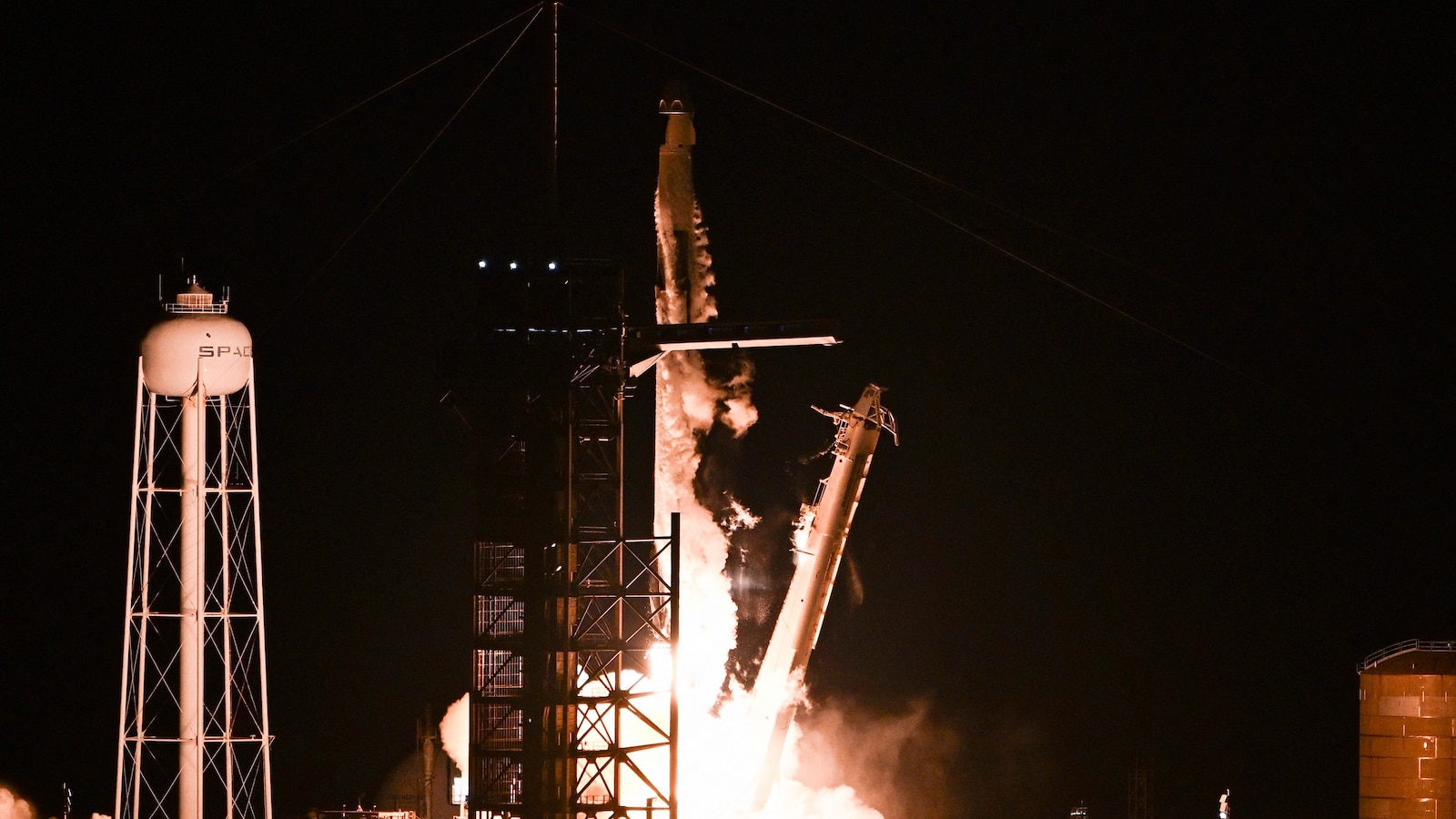After two weeks of delays, the ambitious Polaris Dawn space mission, led by billionaire Jared Isaacman and in collaboration with SpaceX, launched early Tuesday morning.
The four-person civilian crew launched from the Kennedy Space Center in Florida on Tuesday at 5:23 a.m. ET in SpaceX’s Falcon 9 rocket, according to a social media post by the aerospace company.
A SpaceX Falcon 9 rocket with the Crew Dragon Resilience capsule, carrying the crew of the Polaris Dawn Mission, lifts off from Launch Complex 39A at Kennedy Space Center in Cape Canaveral, Florida, on September 10, 2024.
Chandan Khanna/AFP via Getty Images
Lift off came after one final two-hour delay due to “unfavorable weather at the launch site,” as reported SpaceX.
Isaacman, the CEO of the payment-processing company Shift4, is joined on the mission by former Air Force pilot Scott “Kidd” Poteet and two SpaceX engineers, Anna Menon and Sarah Gillis.

A SpaceX Falcon 9 rocket with the Crew Dragon Resilience capsule, carrying the crew of the Polaris Dawn Mission, lifts off from Launch Complex 39A at Kennedy Space Center in Cape Canaveral, Florida, on September 10, 2024.
Chandan Khanna/AFP via Getty Images
The highly anticipated program faced a series of delays since the originally planned Aug. 26 launch due to unfavorable weather conditions and a ground system issue at the launch site.
Prepping for another possible delay, SpaceX said ahead of the launch that the weather forecast for Tuesday remained uncertain.
“Weather is currently 40% favorable for liftoff, and conditions at the possible splashdown sites for Dragon’s return to Earth remain a watch item,” the company wrote on X Sunday.

This undated photo courtesy of SpaceX shows Polaris Dawn astronauts Anna Menon (L), Scott “Kidd” Poteet (2L), Jared Isaacman (2R) and Sarah Gillis (R), sit inside the Polaris Dawn Crew Dragon Resilience ahead of a now postponed launch in Cape Canaveral, Fla.
SPACEX/AFP via Getty Images
Despite the forecast, Issacman remained hopeful about this week’s launch possibility, writing on X, “This is a big improvement over the last two weeks. We are getting closer to getting this mission to orbit.”
The mission was previously delayed due to a ground-side helium leak on the Quick Disconnect (QD) umbilical, SpaceX said on Aug. 26. Umbilical systems employ QD fluid connectors to transfer fluids into a vehicle, according to NASA.

A SpaceX Falcon 9 rocket with the Crew Dragon Resilience capsule sits on Launch Complex 39A at Kennedy Space Center ahead of the Polaris Dawn Mission in Cape Canaveral, Fla., Sep. 9, 2024.
Chandan Khanna/AFP via Getty Images
If successful, the Polaris Dawn mission is poised to make history by launching four private citizens into ultrahigh orbit, ascending to 870 miles above Earth. This would be the highest altitude of any human spaceflight mission since the Apollo program, more than a half century ago.
The program is set to span five days under normal conditions and will see two of the crew members exit the spacecraft in the first commercial spacewalk, at an altitude of 435 miles above Earth.
Due to the absence of an airlock on the SpaceX Dragon capsule, all four crew members will be exposed to the vacuum of space during the ambitious spacewalk.

SpaceX’s Polaris Dawn Falcon 9 rocket sits on Launch Complex 39A of NASA’s Kennedy Space Center as it is prepared for another attempt to liftoff in Cape Canaveral, Fla., Sep. 9, 2024.
Joe Raedle/Getty Images
The spacewalk will also serve as a critical test for SpaceX’s new extravehicular activity (EVA) spacesuits, an evolution of the intravehicular activity (IVA) suit.
This new design includes a heads-up display, helmet camera, and enhanced joint mobility. It also features thermal insulation, solar protection, and a suspension system that allows the wearer to pressurize the suit, don a harness and execute operations as if they were weightless.
The Dragon spacecraft also has undergone significant modifications, including upgrades to the life support systems to supply more oxygen during spacewalks, according to the Polaris program. Environmental sensing has been improved, and a new nitrogen re-pressurization system has been installed, according to the program.
The Polaris Dawn mission will be Isaacman’s second journey to space. In 2021, he funded his first mission to orbit Earth. The project was billed as a childhood cancer fundraiser, garnering $250 million for St. Jude Children’s Research Hospital, and marked the first all-civilian mission in Earth orbit.
